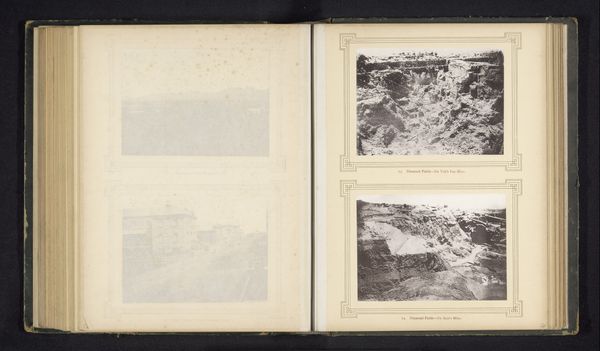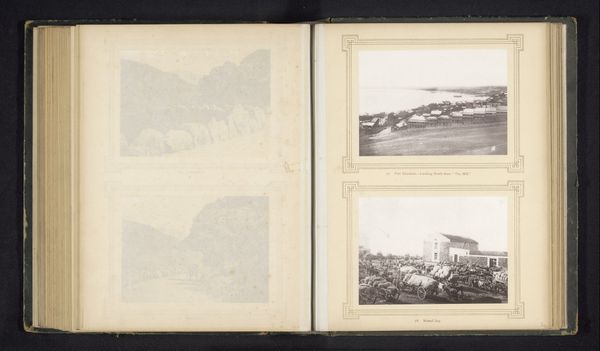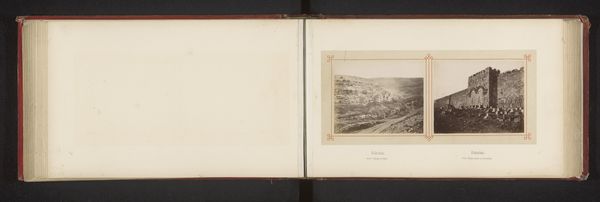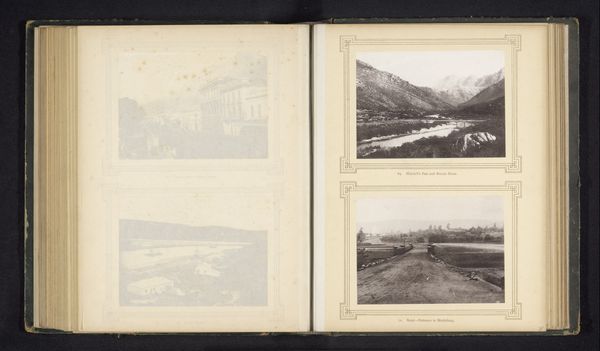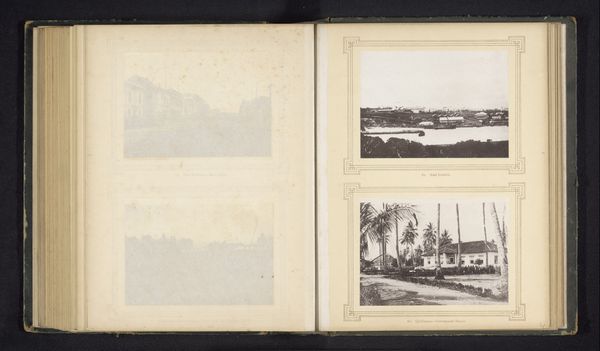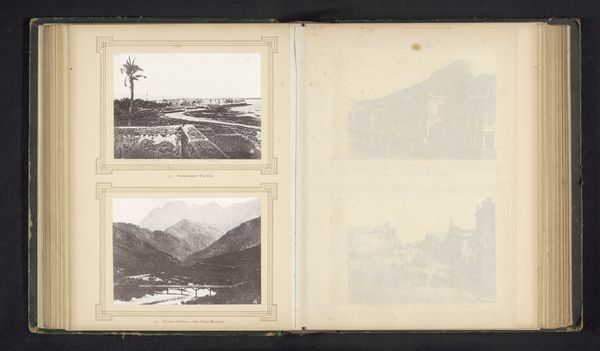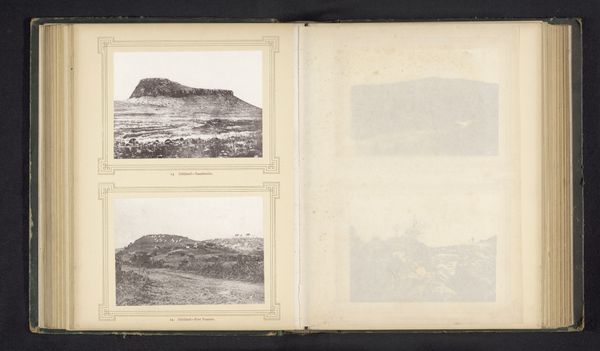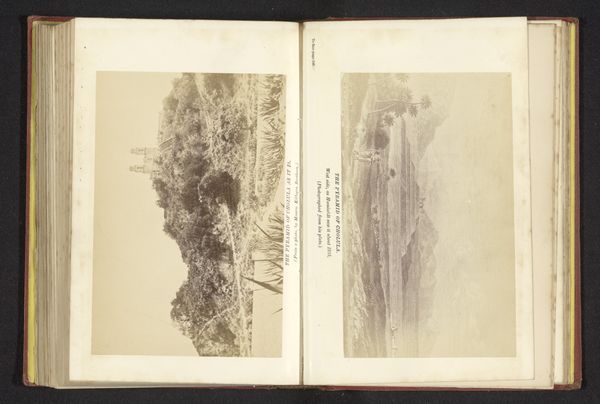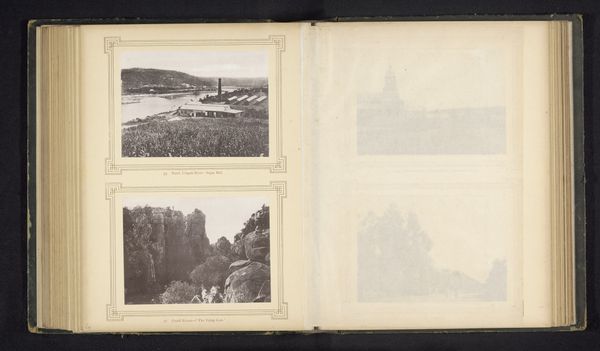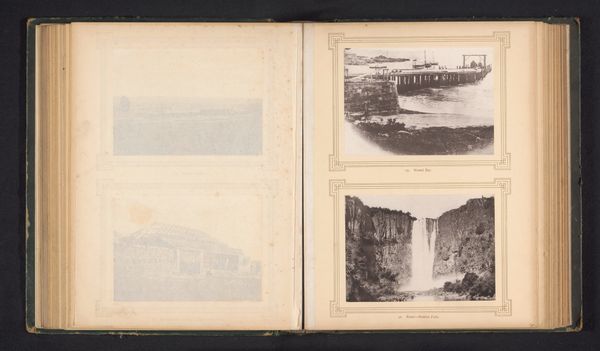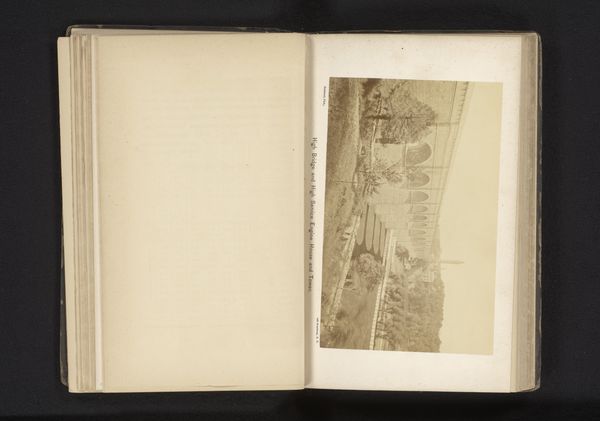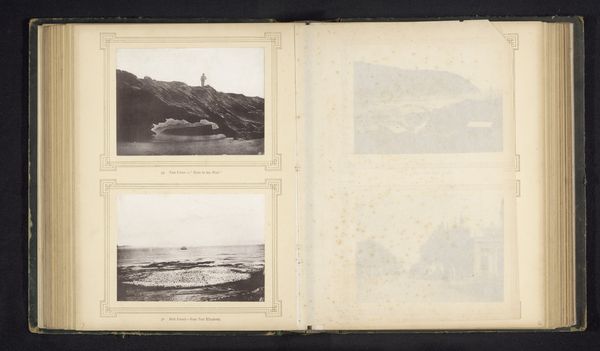![['Waterfall, near George-Western Province', 'Port Elisabeth-From \'The hill"'] by Sam Alexander](/_next/image?url=https%3A%2F%2Fd2w8kbdekdi1gv.cloudfront.net%2FeyJidWNrZXQiOiAiYXJ0ZXJhLWltYWdlcy1idWNrZXQiLCAia2V5IjogImFydHdvcmtzL2IzMDcxY2VlLWUyNTItNDJkZC05YmMyLWQxMDUxNWY2ZGFiNy9iMzA3MWNlZS1lMjUyLTQyZGQtOWJjMi1kMTA1MTVmNmRhYjdfZnVsbC5qcGciLCAiZWRpdHMiOiB7InJlc2l6ZSI6IHsid2lkdGgiOiAxOTIwLCAiaGVpZ2h0IjogMTkyMCwgImZpdCI6ICJpbnNpZGUifX19&w=3840&q=75)
['Waterfall, near George-Western Province', 'Port Elisabeth-From \'The hill"'] before 1880
0:00
0:00
print, photography, albumen-print
# print
#
landscape
#
photography
#
cityscape
#
albumen-print
Dimensions: height 290 mm, width 219 mm
Copyright: Rijks Museum: Open Domain
Curator: Before us, we have two separate albumen prints, both dating back to before 1880. One is titled 'Waterfall, near George-Western Province' and the other 'Port Elisabeth-From "The hill"'. Together, they give a wonderful overview of a very specific time and place. Editor: The juxtaposition is immediately striking. On the right, we have this forceful, untamed waterfall rendered in monochromatic detail. It's chaotic, vigorous – and then your eye travels downwards... Curator: To the quiet city sprawl. Editor: Exactly. Suddenly, the frenetic energy subsides into a landscape of muted repetition. Look at those tiny structures, row after row, all in shades of grey. It feels…controlled, regimented. Is this the consequence of our interactions with nature itself, distilled visually? Curator: What’s fascinating is the way these images participated in shaping a specific colonial gaze. These photographic surveys functioned as tools, categorizing the conquered territories and framing nature and the developing urban landscapes within a context of documentation and control. The crisp edges, the considered framing of each subject – it speaks to the ambition of organizing and understanding the space. Editor: Absolutely. This ambition, though, seems to be inherently at odds with the unruliness of the waterfall. Its dynamic essence escapes the flat constraints imposed on it through this photographic treatment. The camera struggles to encapsulate its movement, thus conveying a sentiment of conflict; order against uninhibited flow. Curator: Considering this, photography becomes more than mere replication. It represents a power structure, revealing how we relate to space itself and our efforts to contain, interpret, and shape our surroundings within established social frameworks. What began as scenic documentation ends up portraying so much more, it reveals colonial mechanisms and social dynamics of that time. Editor: Yes, looking again I see the visual order attempts to contain a vibrant South Africa that threatens the colonial perspective. A compelling binary to behold, and a window into both a landscape and an ideology. Curator: Precisely. Each picture offers not only visual information but an implicit declaration. Photography's inherent subjectivity turns geographical portrayal into a powerful tool to uphold established beliefs and ideologies.
Comments
No comments
Be the first to comment and join the conversation on the ultimate creative platform.
